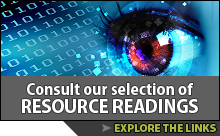Electronic (digital) literature, often abbreviated as e-lit, refers to literary works that are born digital and rely on the capabilities of computers, networks, and digital media for their creation, distribution, and reception.
Unlike digitalized print books, such as e-books or PDFs, electronic literature cannot be fully experienced in print because it often incorporates interactivity, multimedia, algorithmic text generation, or networked environments.
The Electronic Literature Organization (ELO) defines it as works with a literary dimension that "takes advantage of the capabilities and contexts provided by the stand-alone or networked computer."
Examples include hypertext fiction, interactive fiction, digital poetry, generative literature, and more recent forms like Twitterature or netprov.
It's important to distinguish between electronic literature and print literature in digital format. The differences between the two may include origin, experience, printability, and reader role. Electronic literature is born digital, explicitly created for digital environments, whereas digitized print literature was originally in print and later converted into digital form. Electronic literature requires interactivity, multimedia, or algorithmic processes, while digitalized print literature offers a linear reading experience. Electronic literature cannot be printed without losing essential features, while digitalized print literature can usually be printed with little or no loss of meaning. Electronic literature is often participatory, allowing readers to shape the narrative path, whereas digitized print literature, such as books, is passive, with readers consuming text in a fixed order. Examples of electronic literature include hypertext fiction, kinetic poetry, and interactive games. Digitized print literature encompasses Kindle or Kobo e-books and PDFs of novels. Thus, while e-books are essentially digital containers for print texts, electronic literature is a narrative digital art form.
The development of electronic literature reflects the evolution of computing and digital culture. Early experiments in the 1950s included generative literature, which was computer programs that produced poems or stories. In the 1960s, experimental poets and programmers explored text-based games and digital art, and the 1970s brought the rise of interactive fiction, such as Adventure and Zork, where readers typed commands to progress. In the 1980s, hypertext fiction emerged as a new literary genre. Distributed on floppy disks, readers navigated stories by clicking links. Hypertext fiction expanded on the web in the 1990s, and early online journals emerged. The 2000s witnessed the growth of digital poetry, incorporating animation, sound, and interactivity, as well as the thriving of online communities focused on interactive fiction. In the 2010s, social media platforms gave rise to Instapoetry, Twitterature, and collaborative forms like netprov. In the 2020s, electronic literature has increasingly intersected with AI, VR, and AR, blurring the boundaries between literature, gaming, and performance art.
One of the defining features of many e-lit works is nonlinearity. Unlike traditional novels that follow a fixed sequence, electronic literature often allows readers to choose paths, rearrange fragments, or generate unique versions of a text. Hypertext fiction, such as Michael Joyce's Afternoon, a story, lets readers navigate through lexia (text fragments) via links. Generative literature produces different outputs each time, meaning no two readings are identical. This nonlinearity challenges conventional notions of authorship and narrative, making the reader a co-creator of meaning.
Preserving electronic literature is notoriously difficult. Unlike print books, which can survive centuries if cared for, digital works face rapid obsolescence. A work designed for Flash or an obsolete operating system may become unreadable over time. Proprietary formats risk becoming inaccessible when companies discontinue support for their technology. Additionally, floppy disks, CD-ROMS, and even websites degrade or disappear. Many works of electronic literature fall outside traditional publishing systems, making them more challenging to archive. To address this, organizations like the Electronic Literature Organization and digital archives, such as the Electronic Literature Collection, have developed strategies including migration (updating works to new platforms) and emulation (recreating old environments on modern systems). Still, the field faces an ongoing struggle to ensure that today's digital works remain accessible to future generations.
Electronic literature is not simply literature on a screen; it is a distinct artistic practice that leverages the affordances of digital media. As digital culture evolves, so too will the forms and futures of electronic literature.
Feature Article
Electronic Literature Checklist
When deciding whether a site really belongs under Electronic Literature rather than another literature category.
Born-Digital
- - Was the work created for the digital medium, not just scanned or transcribed?
- - Examples: hypertext fiction, interactive poetry, generative text.
Medium-Dependent
- - Does the piece rely on the computer to exist or function?
- - If you printed it out, would it lose its essential qualities (e.g., links, animation, sound, interactivity)?
Interactive or Dynamic
- - Does the reader's action (clicking, scrolling, typing, choosing) shape the experience?
- - Or does the system itself generate new variations (algorithmic writing, procedural poetry)?
Multimedia Integration
- - Does it combine text with sound, video, animation, or code in ways that are integral to the work?
- - Not just illustrations, but media that changes how the story/poem works.
Experimental/Innovative Use of Language
- - Does it push the boundaries of what "literature" can be in a digital environment?
- - Often overlaps with digital art, but with a clear literary core.
Not Electronic Literature
- - Digitized print works (e.g., Project Gutenberg)
- - Online archives or libraries of traditional texts.
- - Communities for sharing conventional prose/poetry without digital experimentation.
- - Reference or summary sites (e.g., WikiSummaries).
Quick Rule of Thumb
- - If the work could exist unchanged as a printed book, it is not electronic literature.
- - If it needs the digital medium to make sense, it is electronic literature.
For text-based adventure games and interactive fiction with a stronger emphasis on puzzles and gameplay, see our related category: Text-Based Computer Games, as well as our category covering the tools that are used to create text-based adventure games: Text Game Creation, since many of these applications (ADRIFT, ChoiceScript, Inform 7, Inklewriter, Inky, Playfic, Twine) are also used to create interactive literature.
Recommended Resources
Featuring short stories, interactive stories, and word games, which may be uploaded, viewed, or interacted with at no cost. Reading may also rate stories. Instructions for submitting content are offered, including text sizes, pages, word limits, age ratings, and copyright information. Interactive stories and word games may also be submitted. Featured works may be listed by author, rating, or topic. Categories include children's, crime, fiction, horror, humor, non-fiction, romance, and sci-fi.
http://www.eastoftheweb.com/
Eastgate brands itself as "serious hypertext," positioning the company as a primary source for scholarly and creative explorations of linked, interactive writing. Its core hypertext tools include Tinderbox (a personal content assistant for visualizing, analyzing, and sharing notes, plans, and ideas) and Storyspace (the writing component of choice for hypertext authors). Eastgate publishes original interactive works that are taught in universities and studied worldwide.
http://www.eastgate.com/
Primarily focusing on electronic and digital literature, digital poetics, and critical work about literature and the arts in digital contexts, the site does publish reviews and essays that engage with traditional literature when those works relate to digital practice, theory, or hybrid forms, but its core focus is electonic/digital literary and cultural practice. The site includes essays, reviews, interviews, podcasts, and special forums for emergent digital literary work.
https://electronicbookreview.com
Electronic Literature Collection
This curated anthology of digital works, published by the Electronic Literature Organization, showcases pioneering pieces that blend text, multimedia, and interactivity to push the boundaries of storytelling. Libraries, educators, and individuals may request a free copy of Volumes 1 and 2 on a USB drive by writing to the Electronic Literature Organization at the address provided. Included are Volume 1 (Oct. 2006), Volume 2 (Feb. 2011), Volume 3 (Feb. 2016), and Volume 4 (Jun. 2022).
https://collection.eliterature.org/
Electronic Literature Organization
ELO is a non-profit organization established in 1999 to promote and facilitate the creation, publication, and dissemination of electronic literature. The organization hosts annual conferences, awards annual prizes for works of electronic literature and criticism, hosts online events, and has published a series of collections of electronic literature. Membership information, conference schedules, awards, projects, board, staff, and contact details are highlighted.
https://eliterature.org/
The EPC is a long-running digital hub for contemporary and experimental poetry, hosting author pages, a digital library, audio/video resources, critical writing, and curated portals to poetics research. Included are author pages with selected works and links to readings and archives, digital editions, and mirrors of important texts and little magazines, poetics, bibligraphies, and critical resources. A custom search bar can be used to access author pages and its digital library.
https://writing.upenn.edu/epc/
This is an open, community-built research resource documenting electronic literature: authors, creative works, critical writing, platforms, and teaching resources. It includes thousands of records describing e-lit works with tags and metadata, an extensive bibliography of articles, conference papers, and essays on electronic literature, biographical and bibliographic records for creators and researchers in the field, as well as entries for tools, engines, platforms, and distribution channels.
https://elmcip.net/
Interactive Fiction DataBase, The
Launched in 2007, The IFDB is a community-run catalog and recommendation engine for interactive fiction and text-adventure games, and maintained as a wiki-style site for browsing, rating, tagging, and reviewing works of Interactive Fiction (IF). Included are searchable listings with metadata such as author, platform, and release year, as well as reviews and ratings, and indexes and results for IF competitions. Wiki-style editing allows users to add game entries, polls, and lists.
https://ifdb.org/
Interactive Fiction Technology Foundation
The IFTF is a non-profit, charitable organization founded in 2016, charged with maintaining, improving, and preserving the tools and services used in the creation and distribution of interactive fiction. The organization operates the Interactive Fiction Competition (IFComp), an annual competition for new works from independent creators, which has been running since 1995. It also manages the IF Archive, the Interactive Fiction Community Forum (IntFiction), and the IFDB.
https://iftechfoundation.org/
An Associate Professor Emerita at University of Minnesota Duluth, Department of Art & Design, the mixed-media artist works in both digital and traditional art materials. Her creative work includes digital print, interactive narrative, and experimental multimedia in a range of hybrid text/image/video projects. Collaborating with writers, coders, dancers, actors, and other visual artists, she contributes to experiments with networked improvisedliterature or Netprov.
https://joellynrock.com/
Featuring collaborative Internet improvisational fiction where participants play characters and join a shared story on social media and web platforms, its games draw on Commedia dell’Arte traditions, with stock characters, masks, satire, and improvised scenes, mixed with elements of role-playing and collaborative writing. Players assume characters, post in word and image, and interact in-character to advance the narrative, with projects running on schedules.
http://meanwhilenetprov.com/
This is the personal website of Rob Wittig. It features design, electronic literature, and netprov projects, including essays, projects, and a blog. On this site, he presents his work in design, electronic literature, and networked performance. It emphasizes participatory fiction and "netprov," a networked improv narrative, alongside essays, video, biographical data, and a blog. His e-lit and netprov sections collect electronic literature created or curated by Wittig.
http://robwit.net/
Twine is a free open-source tool created by Chris Klimas for making interactive fiction, hypertext fiction, and adventure games in the form of web pages. Available on macOS, Windows, and Linux, Twine emphasizes the visual structure of hypertext and does not require knowledge of a programming language, unlike many other game development tools. Twine 1 generated code using twee, but Twine 2 is a browser-based application written in HTML5 and JavaScript, also available as a standalone desktop app.
https://twinery.org/


